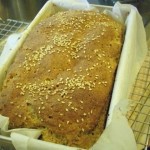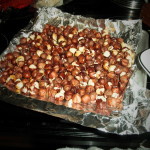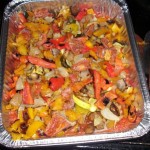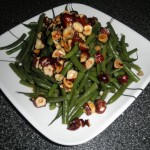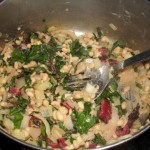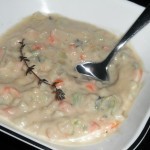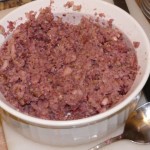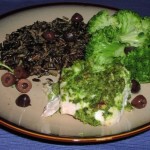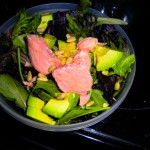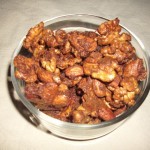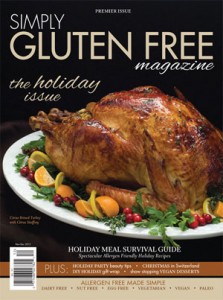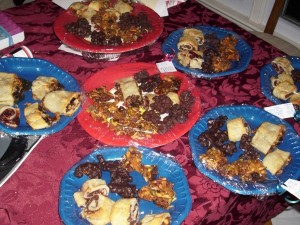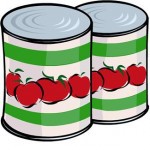I’m a huge fan of naturally gluten-free food. It’s usually healthier, usually cheaper, and IMHO, usually tastier, too. There are so many ways to go g-free quick and easy, and I highlighted a bunch in last month’s newsletter, with tips from a variety of gluten-free bloggers.
And yet…there are so many reasons packaged foods do come in handy from time to time, whether it’s because of job demands, travel, outdoor activities that prevent easy access or you just need to have something shelf-stable and portable in the car in case of emergency.
So…in honor of Celiac Disease Awareness month, I’ve put together a list of healthier options among packaged products, with an eye out towards ones that are lower in sugar, higher in fiber and protein, and less processed.
Obviously, you don’t want to forget naturally gluten-free options, too!
- Larabars®
- Pure bars®
- Raw Revolution Bars®
- Kind bars®
- Bumble Bars®
- No Opportunity Wasted bar®
- NuGo bars®
- Zingbars®
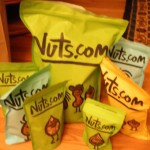
- Rise bars
Snacks:
- Bhuja Snacks®
- Caveman Cookies®
- Enjoy Life® (allergen friendly)
- Funky Monkey Snacks
- Hail Merry’s®
- Just Tomatoes® Fruits & Veggies
- Mary’s Gone Crackers®
- Nuts.com® (many options)
Quick meal options
Frozen:
- Amy’s Organic® has frozen entrees, with vegan and vegetarian options
- Dr. Praeger-veggie burgers, veggie patties, fish sticks & more.
- Garden lites® soufflés and muffins, vegan and vegetarian options
- Glutenfreeda® has a wide variety of options. Nutritionally speaking, the burritos are healthier than the ice cream sandwiches, of course
Veggie Burgers:
- Dr. Praeger’s® Gluten-free California Veggie Burgers (check the box—they also sell products with gluten but test gluten-free products for safety)
- Hilary’s Eat Well® Gluten-Free Veggie Burgers
- Qrunch®burgers Vegan and allergen friendly
- Sunshine burger® Nutritionally, the most fiber and protein packed g-free veggie burger I’ve seen!
Shelf-stable options:
- Certified g-free oatmeal—many brands are tested: Glutenfreeda, Bob’s Red Mill, Cream Hill Estates, Holly’s Oatmeal and more
- CookSimple® has a variety of boxed meals (some gluten-free, some not)
- GoPicnic® has pre-packed meals that are shelf-stable
- St. Dafour® has tinned meals (some gluten-free, some not)
Soups!
- Amy’s® Organic
- Dr. Mc Dougall’s®
- Pacific Foods®
- Progresso®
Breakfast:
- Bob’s Red Mill Mighty Tasty Hot Cereal®
- Crunchy Flax from Enjoy Life®
- Erewhon Buckwheat and Hemp Cereal®
- Kind Healthy Grain Clusters®
- Mesa Sunrise®
Ah, the task of finding a g-free bread with fiber. Try these:
Sandwich Petals®
Udi’s Flax and Fiber ®
Companies that offer sample boxes
- Taste Guru®
- GFreeConnect®
- Got food allergies? I’ll be speaking at the FARE conference in Arlington on Eating Well with Food Allergies on Saturday, May 18th. It should be a wonderful event!
- Saturday is a busy day for me. I’ll also be on Blog Talk Radio with Joy Keys, speaking about Celiac Disease at 11am EST.
- There’s a Making Tracks for Celiac Walk in Arlington on June 2nd in the morning to benefit the Center for Celiac Research.
- Children’s National Celiac Disease Center is hosting their annual DC Gluten-Free Expo on June 2nd in Bethesda, MD. They always do a wonderful job, and it’s a fantastic cause.
Cheryl Harris, MPH, RD is a Registered Dietitian, Nutritionist and Certified Wellcoach in Fairfax & Alexandria, VA. She helps people with a range of dietary issues , including Celiac Disease, GI issues, food allergies, pregnancy, breastfeeding, vegetarian and vegan diets, preventing diseases and “whole foods” eating. Let’s get you on your way to achieving your goals and feeling great! Email or call 571-271-8742.

